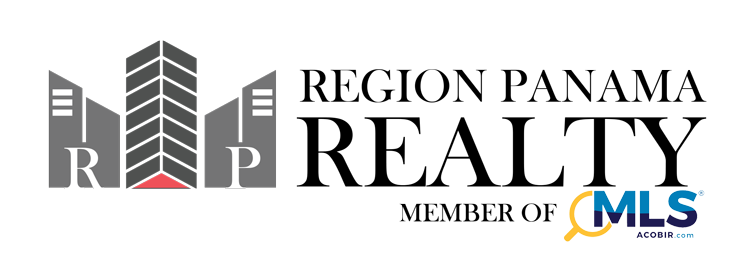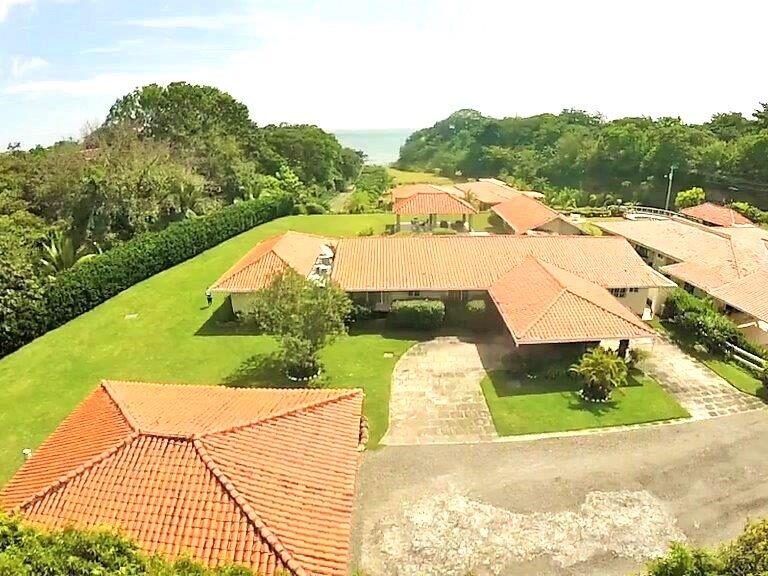Brief Panama History
Panama’s history is highly influenced by its strategic location. Hence, it is a country of connectivity where the north meets the south and the Caribbean meets the Pacific. On August 15th Panama celebrates the foundation of the first Spanish city on the Pacific Coast in 1519.
Panama belonged to Spain until 1821 when it became part of Colombia until the declaration of Independence on November 3rd of 1903. The construction of the Panama Canal is very important in Panama´s History. As a result, the infrastructure of the City was improved. Also, the first portable water system was created. One hundred and twenty years later, Panama continues to be a country of connectivity. Moreover, there are direct flights to more than 86 cities worldwide. Also, more than 15 thousand ships per year transiting through the Canal.
Panama Weather
There are really just two seasons in Panama. The dry season and the rainy season. Therefore, throughout the year, the temperatures don´t change much. Expect between 23°C (74F) and 32°C (90F) with an average of 27°C. (81F)
The dry season begins mid-December with nice breezes and cool evenings. It lasts through late April. The probability of rain is very low during these months. Hence, you can expect a 3% to 5% chance of rain. Expect about 25% probabilities of a wet day during the rainy season. It begins late April through mid-December. The rainiest months are October and November when the probabilities of rain are 45%. Consequently, the rainfall per year in Panama is about 105 inches per year. Also, you can expect a humidity level average of 84%.
Most importantly, there is a lot of sunlight in Panama. The sun rises at about 6:10 am and sets at about 6:30 pm. Indeed, Panama offers ideal weather to live comfortable year around.
If you prefer cooler weather, there are many mountain communities in Panama at 500, and more, meters above sea level. Among the most popular for retirement or vacation are: Altos del Maria, Los Altos del Cerro Azul, El Valle de Antón. Also, La Pintada de Penonome, Santa Fe de Veraguas, Boquete, Cerro Punta, and Volcan.
Each town has its own charm and vibe. Boquete is the most developed mountain community in Panama. El Valle de Antón is the closes to Panama City and other beach towns on the Pacific Coast. Moreover, hiking is very popular in these regions where you can walk to beautiful rivers waterfalls, and mountain tops. Amazingly, from some of them, you can view the Caribbean and the Pacific Ocean at the same time.
The Panama Canal
Inaugurated on August 15 of 1914, The Panama Canal is an essential part of the economy. It connects 1700 ports in 160 countries with 140 maritime routes.
In 2018, the Canal generated a bit over 2,500 Million Dollars. There was an increase of 8.5% in comparison with the previous year. Furthermore, about 6% of world commerce transits through the Panama Canal. Hence, it is one of the world’s most valuable pieces of infrastructure.
Since the inauguration, more than 700,000 vessels have transited the canal. Currently, 35-40 vessels pass through the Panama Canal every day.
Government
The Government is Democratic and very stable. The elections are held every 5 years. Furthermore, the government is divided into three main Institutions. The Executive (Presidency and the Ministers), The Legislative (The National Assembly), and the Judicial Organ (The Supreme Court).
There are several political parties in Panama. However, the most dominants are: Partido Revolucionario Democratico (PRD), Partido Panameñista and Partido Cambio Democrático. A president in Panama cannot be re-elected the following term.
Currency and Economy
The currency in Panama is the US Dollar. Panama has its own currency as well. It is called the Balboa which is equal to one US Dollar however only available as a coin.
Most importantly, Panama has one of the most stable economies in the Region. 75% of the GDP comes from tourism, financial, and logistic services, this included the Canal. Moreover, the income per capita is the highest in Central America. Most of the Panamanian economy is oriented and driven by services and world commerce. Without a doubt, The Panama Canal has a major role as well.
Statistics show that the economy of Panama grew by 3.7% in 2018. The construction sector grew by 3.2%. Mainly due to the construction of line 2 of the Metro de Panama and other government infrastructure projects. The areas that showed a decrease was hotels and restaurants at about 3.2% less than the previous year.
Even though a decrease in the growth of the economy, Panama has one of the highest GDP growth in the region.
Connectivity and Transportation
With the canal, Panama is a world leader in maritime connectivity. Container ships represent more than half of the traffic through the canal. Followed by LPG/LNG gas carriers. Also, cruise ships, car carriers, tankers, and bulk carriers.
From Tocumen International, there is a direct flight to 86 cities around the world, more than any other airport in the region. Moreover, there are several airports for domestic flights. Furthermore, there is a new international airport in the town of Rio Hato. It is 1.5 hours west of Panama City. However, and for the time being, it only serves charter flights from Canada. These charter flights bring many tourists to the beach resorts in the area.
Public transport includes the Metro de Panama, a train system connecting the suburbs with the main avenues in the City. Also, the biggest bus terminals in Central America. Take a bus to almost every town in the country. Above all, those connecting to major cities are quite comfortable and the same as western standards. Moreover, a public bus system is available within Panama City as well as Uber and regular taxi cabs.
Banking and Mortgages
The Banking system is mostly constituted by private banks, many with international capital. With over 80 banks, banking is positioned as the most important in Central America. Besides, Panama offers a strategic location for these banks to operate. Likewise, new banking laws are in place to avoid money laundering and terrorist activities. Hence, this makes the Panama Banking system a secure place to deposit the investor’s capital. Nevertheless, to open a new bank account has become a bit more complicated than in the past. Indeed, the new process guarantees security and reliability for the customers and protects the Financial System.
Mortgages in Panama for a foreigner is possible. However, most banks prefer that the customer are a resident for at least 2 years. Also, having an existing bank account makes it easier.
The interest rates will vary among the banks. Nevertheless, you can expect anywhere from 6% to 7.5% and up to 25 years term. A 70% financing of appraisal value is typical.
General requirements:
- Assessment of the property
- Fire Insurance for 100% of the value of the improvements on the property
- Life Insurance for the amount of the loan
- Legal Expenses and Registration of the Deed
Documents Required:
- Proof of income: It can be a work letter, proof of social security or private retirement fund
- The last two income txt statement. If self-employed, then the last tax return of the business
- Two banks reference from your home country
- Credit report from your home country
- Verification of persona assets (shares certificates, bonds, properties, bank stamens)
- Copy of passport and additional identification Card
- Copy of the purchase-sale contract
Schools in Panama
Panama has the highest literate percentage in the region with a high 94.5%. The School system in Panama is divided into three sectors:
- Public Schools in Panama
The Public School system starts at the kinder garden, then from first grade to 12th Grade. Also, the school year for Public Schools is divided into three trimesters. The first one goes from March through the end of May then a week break. The second Trimesters starts in June Through the end of August with a week break. The last trimester starting in September and ends around December 20th. Additionally, school hours in the Public Schools start from 7:30 am until 12:30 pm. The afternoon session lasts from 12:40 pm to 5:00 pm. In Public Schools, the admission fees are $18.50 with no monthly fees.
- Private Schools In Panama
There are a bit over 360 private schools in Panama. Typically classes start at 7:00 am until 2:00 pm and others from 8:00 am to 3:00 pm. The annual registration fees will depend on the school and the grade of the student. Admission fees range between $US 350 and US$2,000.00 and monthly fees range between US$300.00 and US$1,500.00
Here is a list of some private schools in the Panama City area. Colegio De La Salle, Colegio de Panama, Colegio San Agustín, Colegio Saint Mary de Panamá. Also, Colegio Javier, El Colegio Episcopal en El Carmen (CEP), Crossroads Christian Academy, Colegio Las Esclavas, Colegio Maria Inmaculada. Moreover, the Private schools in Panama have the same calendar year as the Public Schools.
- International Schools in Panama
For many years, Panama has welcomed thousands of families from all over the world. Consequently, the necessity for international schools was evident. Hence, over the years, more International schools have found a new home in Panama. The International Schools in Panama have a different calendar year. It is similar to the United States. Classes begin in August and the school year ending in May or June of the following year. Also, students have a vacation period during the Christmas holidays. Moreover, the classes start at 7:40 am until 2:40 pm. Admission fees are similar to those in private schools as well as monthly fees.
Here is a list of International Schools in the Metropolitan area. International School of Panama (ISP), King’s College, Boston International School, The Oxford School, The Metropolitan School of Panama. Also, Lycée français Paul Gauguin de Panama, Balboa Academy. Moreover, in the Coronado and other beaches areas, there are three others. Panama Coast International School, Coronado International School, and Five Start Academy.
Nature
The diversity of the flora and fauna is wide and quite spectacular. Indeed, in the middle of the city, you hear and see parquets, toucan flying by, and parrots. Also, several other species of birds. Moreover, the city is full of trees all around where birds can find shelter. There are several regions where bird watching is one of the main attractions. Drive to El Valle de Antón or Altos del Maria for bird watching. Besides, Panama also means an abundance of fish, trees, and butterflies. In fact, there is one tree called Panama.
Watch dolphins and whales on your way to the pearl islands: Contadora, Isla Viveros, and several others on the Pacific. Moreover, Panama is one of the regions where humpback whales migrate from both the Northern and Southern hemispheres to breed and give birth. Indeed, an estimate of 2,000 humpback whales migrates from Antarctica and from Alaska to Panama. Whale watching tours are available during the season, end of July through September.
Panama is a small country with a large diversity of environments, all within a few hour’s drive from any point of the country. You can be in the white sand beaches of the Caribbean within a couple of hours from Panama City. Also, take a short ferry ride (half-hour) to one of the closest islands: Taboga. If you prefer the surfing beaches on the Pacific, they are at one hour’s drive west of Panama City. Also, world-class surfing at Playa Venao near Pedasi. Drive to Playa Tetas in the town of San Carlos at just 1.5 hours from the city. Playa Santa Catalina in Veraguas and Isla Bastimentos in Bocas del Toro are other famous surfing beaches.
Dining and Nightlife
It is amazing the diversity of cuisine Panama offers. First, and starting with the typical food of Panama, you will find the Sancocho in almost every corner. Sancocho is chicken soup, Panamanian style, with vegetables and roots. Also, and another typical dish of Panama is the Arroz con Pollo (Rice with Chicken). Rice, lentils, and brown beans are typical side orders to any Panamanian dish. Among international cuisine, you find them all, Chinese, Italian, Peruvian, Mediterranean, Brazilian, Sushi, Indian, Colombian, and many others. Finally, as a country with access to two oceans, fresh seafood is available on a daily basis in many restaurants.
Many fast-food franchises are here as well as American casual restaurants. TGI Fridays, Bennigan’s, Hard Rock Café, and Apple Bees among many others. Visit Casco Viejo, a historical district and one of the best places to eat international cuisine. Also, Casco is the second most visited area in Panama, after the Panama Canal.
Are you more of a party and a social person?. Panama City nightlife is very diverse as well. Many casinos and pub bars have live music on weekends. The nightclubs offer good music in a safe environment. Many are on rooftops of buildings where the view of Panama City skylines is spectacular. Karaoke is also very popular. Again, Casco Viejo is a great place to have a few drinks after dinner. Also, to enjoy live music, or the Latin beats of the DJ.
The Culture
Panama Culture is a result of the influence of cultures from many places in the world throughout history. Spanish, Afro-Caribbean, Arabs, Jews, Americans, Chinese, and Colombians among others. All found in Panama the right place to live in tranquility, peace, and harmony. Also, the indigenous influence is represented by several ethnic groups distributed in several regions of the country. The Popular MOLA is a unique art created by the Kuna People of Panama. The typical dress is La Pollera, winner of many international awards as the most beautiful nicest national dress.
The influence of Spain is represented in the old infrastructure in several areas of the city. Especially in the historic district of Casco Viejo as well as in other cities in the interior. The diversity of religions is also well represented and most importantly, well RESPECTED. However, the majority of the population is catholic.
Want to learn more about the history of Panama?. Visit Museo del Canal Interoceánico, Museo de la Historia y Tradición Penonomeña, Iglesia San José (Altar de Oro). Also, Panama Viejo, Casco Antiguo, Biomuseo, Portobelo, Museo del Parque Arqueológico El Caño.
The Panamanian people take their holidays very seriously, specially Carnivals and Fiestas Patrias (Independence Day Holiday). There are more holidays in Panama during the month of November than any other month. These are good days to visit and learn about Panamanian Culture. Nevertheless, not to do business, most public and private offices and institutions are closed.
Infrastructure and Amenities
Many foreigners consider Panama City the Little Hong Kong of Latina America. Indeed, it is the second-largest city in Latin America. Also, the one with the most sky-scrapers. Moreover and a unique characteristic is the mix of single-family homes, condominiums, and office buildings in the heart of the City.
With the most complete road infrastructures in Central America, it is easy to travel between cities. Recently completed, line two of the Metro connects many suburbs with downtown in just minutes. Moreover, the expansion of the Metro to the International Airport of Tocumen is in process. Also, the Tocumen international airport just finished a large expansion to facilitate more direct flights.
The third line of the Metro is approved. It will connect the city with Panama Oeste (West), the closest province to Panama City. Also, in 2019 the 3rd bridge over the Panama Canal in the province of Colon was completed. This bridge on the Caribbean side opens opportunities to rural communities in this region. Moreover, the 4th Bridge over the Canal is under construction, it will represent more fluent traffic in and out of Panama City.
There is public and private health available. In the private sector, there are many hospitals offering attention to the same standards as in the US. Among these hospitals, you have Hospital Nacional, Pacifica Salud, and Clinica Hospital San Fernando.
Amenities in Panama are everywhere, including the largest mall in Central America, Albrook Mall. Also, Multiplaza Mall, Multicentro, Soho Mall, Westland Mall, and several others in the major cities. Also, many little plazas with all kind of stores and restaurants. Find a grocery store in almost every corner of the city and small towns as well.
In general, Panama offers great infrastructure throughout the country, making it easy for all lifestyles.






